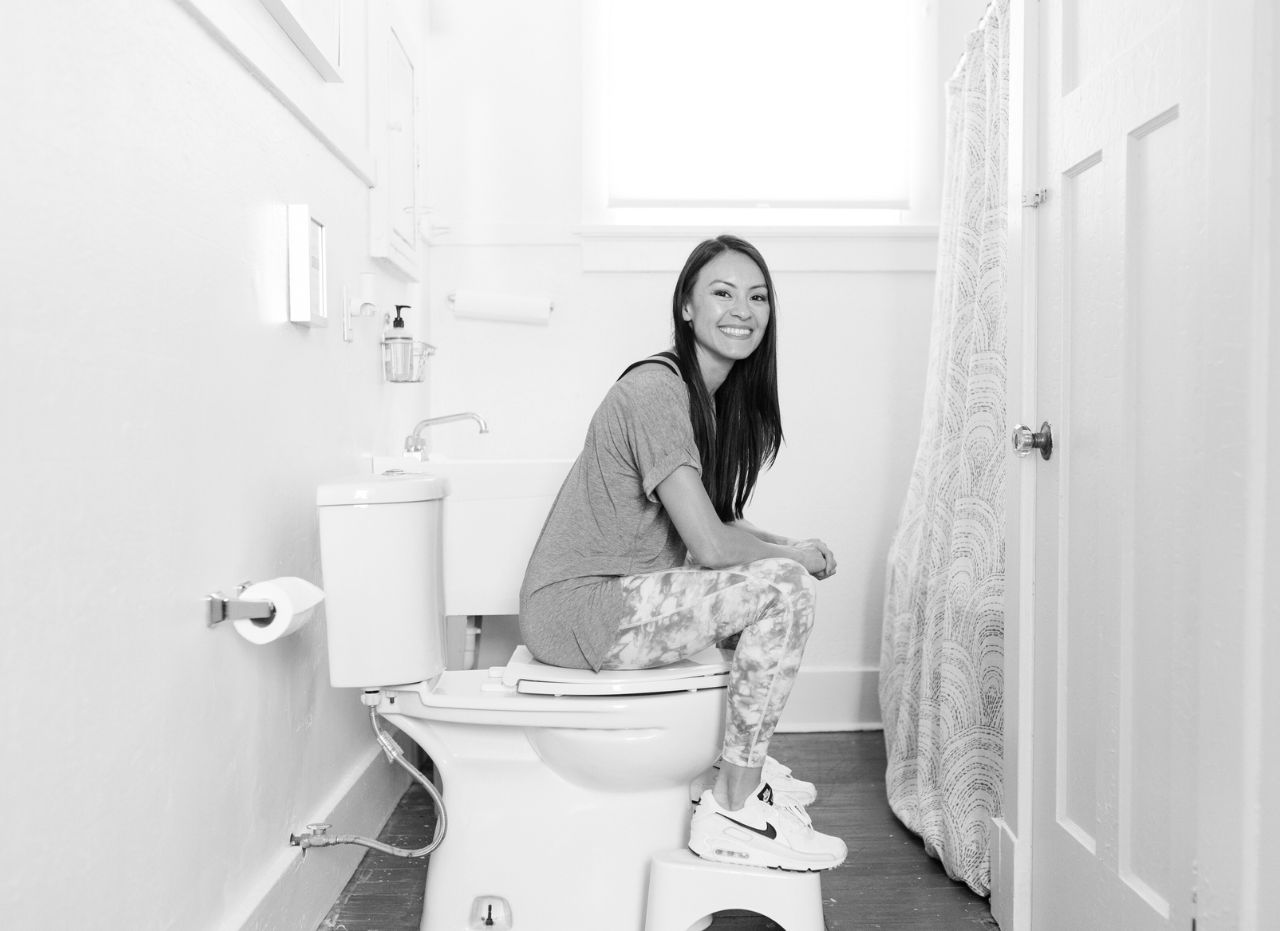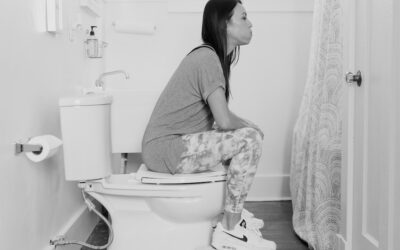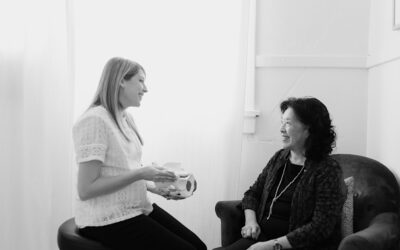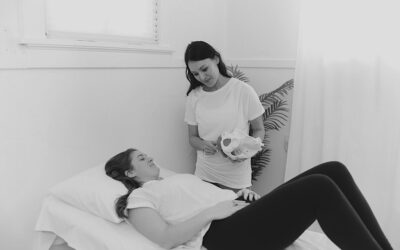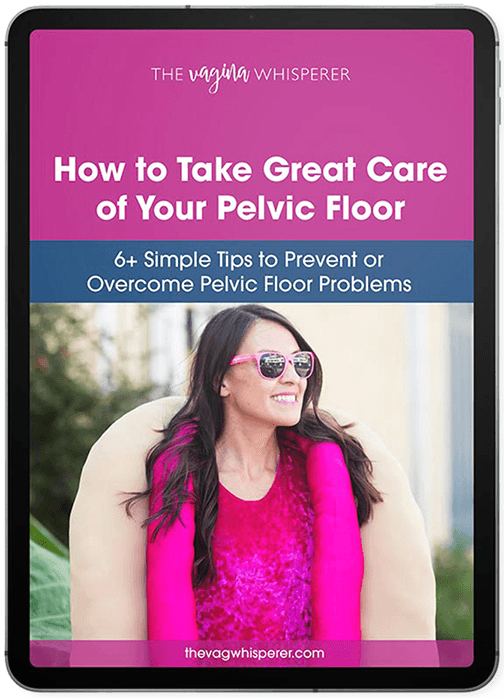In middle age, most vagina-owners start to notice some changes… It’s tough to get a read on our menstrual cycle.
We’re constantly hot and sweaty. (Otherwise known as “personal summers.”)
We have trouble falling or staying asleep.
Our downstairs feels like a desert.
Many of these symptoms are to be expected on the path to menopause. What we often don’t expect are all the changes that happen to our bladders!
If you’re in perimenopause and you’re having trouble going #1, you’re not alone. And you don’t have to put up with perimenopause bladder problems!
What is Perimenopause?
Perimenopause is the slow transition toward menopause, when our ovaries stop producing eggs and we can no longer reproduce.
Perimenopause looks different from person to person. For some, it begins as early as their mid-30s, and for others it doesn’t show up until their mid-50s. Perimenopause can last for 12 months or so, or it can take upwards of 10 years.
Symptoms also range widely, but they most often include a combination of:
- Irregular and unpredictable menstrual cycles.
- Hot flashes, night sweats, and heavy sweating.
- Vaginal dryness, painful sex, and decreased libido.
- Trouble concentrating.
- Achy joints and muscles.
- Sleep challenges.
- Mood changes.
How Does Perimenopause Affect Our Bladder?
Another common (but less talked about) symptom of perimenopause is changes in bladder habits and function. Urinary urgency, urinary incontinence (like the infamous sneeze-pee), and urinary tract infections (UTIs) all become more common during this transition.
And for that, we can thank our dear friend, estrogen.
In perimenopause, the ovaries gradually stop functioning and our estrogen levels begin to nose-dive in preparation for the end of our reproductive years.
Decreasing estrogen levels are responsible for basically all of those not-so-fun perimenopause and menopause symptoms—including changes to our bladder.
Perimenopause Bladder problems due to low estrogen include:
- Leaking urine when coughing, sneezing, or laughing.
- Constant urge of the need to pee.
- Recurrent UTIs.
- Waking to pee at night.
That lack of estrogen weakens and thins the bladder wall, which makes urinary functions less predictable. These changes can also weaken the pelvic floor muscles, which reduces overall support for the bladder and urethra.
Addressing Perimenopause Bladder Problems
Fortunately, you can do plenty at home to help stabilize hormone levels and make perimenopause a little easier on your body.
- Eat a diet focused on whole, unprocessed foods.
- Improve sleep hygiene.
- Limit caffeine and alcohol.
- Exercise regularly (current recommendations are 30 minutes per day, 5 days a week).
- Make sure you’re getting sufficient calcium.
- Decrease stress with therapy and other management techniques.
- Quit smoking.
Supportive devices like pessaries can also help. These tools go inside the vaginal canal to provide support for pelvic muscles and tissues. And with that extra support, your bladder can focus on what it does best!
Another potential option for your perimenopausal symptoms is hormone replacement therapy. Like any medical intervention, there are risks to hormone therapy for perimenopause. So check in with your physician to see what treatment options are available to you—and best for you!
4 Steps You Can Take Right Now to Avoid Perimenopausal Bladder Problems
One of the most helpful ways to ease bladder problems in perimenopause is with healthy bathroom habits. Check out these tips to get you on the right track.
#1 Don’t pee “just in case.”
While the just-in-case pee seems like a great idea, it can actually work against you.
As the bladder stretches to hold more urine, it sends us signals so we can start heading to the bathroom. With just-in-case peeing, we train our body to respond to bladder urges when it’s not quite at capacity. That means it’ll send signals that we have to go even if our bladders aren’t remotely full! Then, overtime, our bladders actually shrink, which leads to increased urinary frequency.
Bottom line? Only pee when you have the urge to go!
#2 Don’t hover over the toilet. Sit.
We all want to avoid public toilet germs. But over time, hovering over the bowl can make urinary function worse!
In a squatting position, our muscles aren’t in prime peeing position. We’re effectively obstructing the flow of urine and preventing complete emptying. Then, we have to push and strain to finish urinating. This leads to extra and unnecessary stress on our pelvic floor muscles and our bladder.
#3 Stop pushing when you pee.
Speaking of straining, there’s no need to power-pee. All that extra pressure can make the pelvic floor muscles too tense or too weak, which can lead to other pelvic floor dysfunction. Instead of trying to set a peeing PR, breathe deeply and just let the stream happen on its own. Your body will thank you!
#4 When necessary, suppress the urge to pee.
When you need to go, you should go. That’s what’s healthiest for our bodies! But sometimes, a bathroom is just inaccessible! So, in the short term, there are some things you can do to quiet the urge to pee until you can get to the toilet in time:
- Distract yourself.
- Take long, relaxing, deep breaths.
- Sit or stand as still as possible.
- Perform 5-10 pelvic floor contraction (Kegels) to quiet your bladder urge.
In the long term, taking good care of your whole body–not just your pelvic floor and core–can decrease urinary urgency. Eating well, drinking water wisely, reducing stress, and moving your body are all great ideas!
Tame your overactive bladder.
Keeping your pelvic floor and core in tip-top shape can help to prevent and alleviate bladder problems and strengthen your pelvic floor muscles during perimenopause.
Get started now with on-demand workouts for your pelvic floor and core. Your first week is on me!

